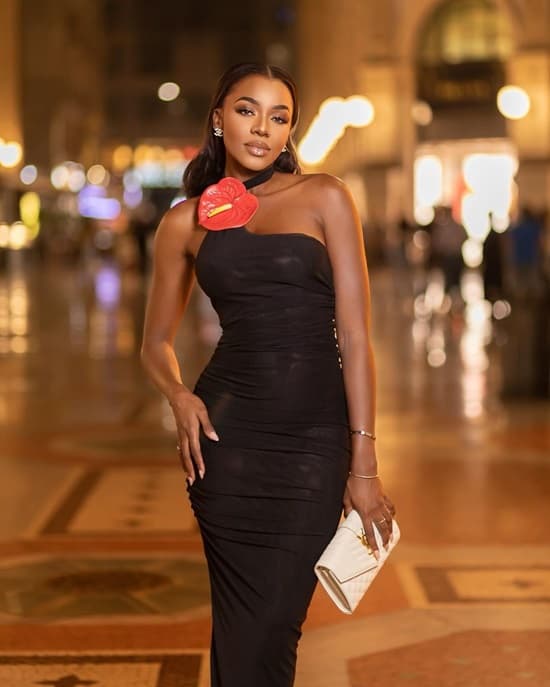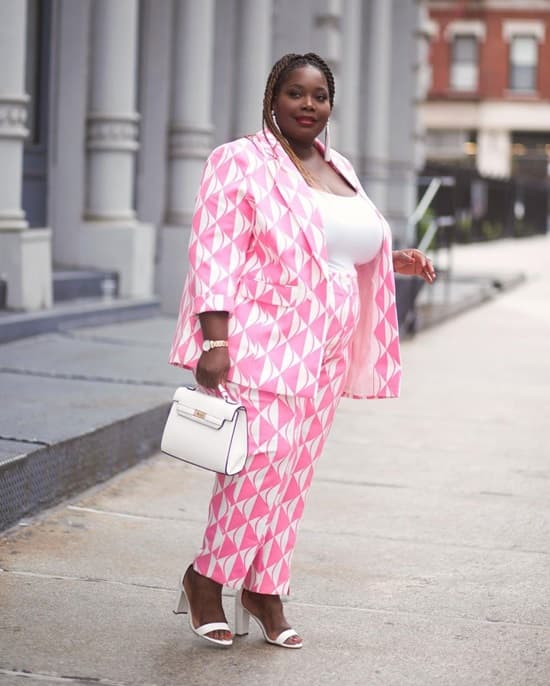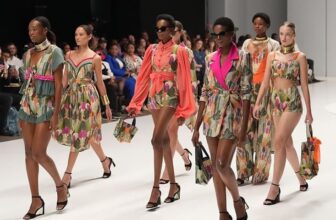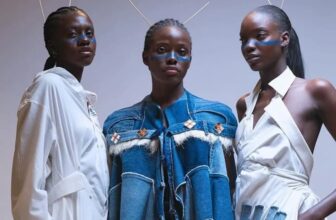When it comes to fashion, there is often a lot of emphasis on dressing for your body type. The idea is that certain styles will flatter certain body shapes, while others will not.
For quite some time, the fashion industry has promoted the notion that the key to looking good lies in dressing according to your body type. I remember growing up and reading articles in magazines that meticulously categorized individuals into different body shapes, each accompanied by specific clothing recommendations.
However, this approach has faced growing skepticism over time, as not everyone fits neatly into these predefined categories. The idea of “dressing for your body type” is now being questioned, with fashion critics arguing that it reinforces unrealistic beauty standards and restricts personal expression.
The silver lining in this scenario is the expansive and evolving nature of the fashion world, which recognizes the need for greater flexibility and individuality. Now, it’s becoming more widely accepted that there’s no one-size-fits-all formula for looking fashionable. And, more individuals are inclined towards gaining a deeper understanding of their body proportions to enhance the outward packaging of their bodies.
Ahead, we’ll share reasons why dressing for your body type may not be as helpful as once thought, and the liberating aspects of embracing your style, alongside alternative tips that empower you. This will confidently showcase your preferred aesthetic while highlighting your best body features.
What Is Body Type Dressing?
Also known as “shape dressing,” body type dressing is the practice of selecting and styling clothing based on the specific proportions and characteristics of one’s body (majorly the bust, waist, and hips). The idea is to choose outfits that complement and enhance the natural features of a person’s physique, aiming to create a balanced and visually appealing appearance.
 Photo: Instagram.com/vivipanamera
Photo: Instagram.com/vivipanamera
Body type dressing often categorizes individuals into different shapes or silhouettes, such as pear, apple, hourglass, rectangle, or inverted triangle, each with its recommended styles and clothing choices.
For example, someone with a pear-shaped body might be advised to emphasize their upper body and draw attention away from the hips, while an hourglass shape might focus on highlighting the waist.
These guidelines are often provided as general recommendations, and individuals are encouraged to adapt them to their personal preferences and comfort.
Should you dress according to your body type?
When considering fashion choices, it’s essential to recognize that trends change every year, and they may not always align with what’s deemed “suitable” for your body type. Your style doesn’t have to be dictated by conventional notions of dressing for a specific body shape and following such guidelines depends on individual preferences and comfort.
While dressing for your body type has been a common practice in the fashion industry, there’s no strict rule insisting on adherence to these guidelines. The idea seems to be less popular nowadays, with fashion stylists like Carly Landig and Dr. Dawnn Karen criticizing it for lacking inclusivity.
Acknowledging that there are several body types, it becomes clear that strict guidelines can’t accurately cover the diverse preferences of the entire female population.
With so many clothing options today and fashion trends changing so quickly, it can be overwhelming to stick to the body shape rules. And, even if you decide to follow body shape dressing, it’s okay to only use the tips that you find helpful and ignore the ones that feel restricting.
Body shape dressing can be a starting point, not the final choice. Each person’s body is unique, and everyone expresses their style in their own way. We can learn from different approaches to dress in a way that truly reflects ourselves and highlights our favorite features.
The issues with body type dressing and why the myths persist
Body type dressing, often seen as a helpful style guide in certain instances, is not without its set of problems and criticisms. One significant issue lies in the stereotyping of body shapes into categories like pear, apple, or hourglass.
This oversimplification may lead to unrealistic expectations and reinforce narrow beauty standards. Also, the concept lacks inclusivity, focusing on a few standard body types and neglecting the diverse range of existing shapes.
Fashion changes very often, and the guidelines for dressing based on body shape may not keep up. This can make people feel stuck or old-fashioned in their clothing choices. Different fashion sources give conflicting advice, making it confusing and frustrating for people looking for guidance.
 Photo: Instagram.com/stylishcurves
Photo: Instagram.com/stylishcurves Some people worry that body shape dressing can lead to body shaming and a lack of body positivity. Saying certain body shapes are better might spread negative ideas. Following these guidelines too strictly can also limit how people express themselves and be creative with their style.
Another issue is that focusing on appearance in body type dressing might make people ignore their comfort. People might sacrifice feeling good just to follow fashion rules. And because fashion experts have different standards, it’s confusing for individuals who don’t know which recommendations to follow.
How to dress beyond the body shape rules
It might sound quite cliché but picking clothes just based on your body shape can be limiting. Instead, it’s suggested to focus on the clothes themselves, not just your body. So, when the traditional rules about dressing for your body shape don’t feel right, embracing your unique style is essential.
Understanding your style naturally involves becoming familiar with your body proportions – arguably the single most crucial factor in determining how to present your outward self on a day out with yourself or friends. It extends beyond simply acknowledging body type considerations.
 Photo: Instagram.com/vivipanamera
Photo: Instagram.com/vivipanamera Armed with this indispensable information, you can consistently choose attire that complements your physique. In reality, the devil is in the details when it comes to dressing, and although you may wish to downplay the significance of your body shape in your fashion choices because it isn’t really necessary, managing your body is key.
For instance, if you have a combination of large busts, a short torso, and wide hips, opting for clothing that visually divides the two larger parts can be beneficial. A well-placed belt over a short gown is a practical example.
Similarly, if you have a short torso, it’s advisable to steer clear of loose-fitting tops. Instead, opt for longer tops that extend beyond the widest part of your body, enhancing your figure and creating the illusion of added height.
Comfort should be a priority when selecting clothing. Opt for pieces that feel good on your body, as this can significantly impact your overall confidence. Your comfort and well-being should take precedence over adhering to rigid fashion rules.
Don’t be afraid to mix and match your wardrobe pieces to create a look that reflects your personality. Combining different elements allows you to express yourself through your clothing choices, showcasing your individuality.
Rather than following strict rules about which body parts to emphasize or downplay, focus on highlighting the features you love most about yourself. Celebrate and feel proud of the aspects that make you unique and special.
If you need guidance, consider seeking advice from a stylist or someone knowledgeable about fashion. They can offer personalized recommendations based on your preferences, helping you navigate the world of fashion in a way that suits your style and lifestyle.
In the end, trust your instincts and wear what makes you happy. Fashion is a form of self-expression. As an individual, your clothing choices should align with your personality and outlook on the world. Break away from traditional rules and create a style that resonates with you, you can embrace your individuality and feel confident in your unique fashion journey.
Photo Credit: Instagram / Stylishcurves






